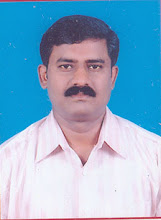
Bikaner offers awesome scenes of Thar Desert with majestic sand dunes, hard scorched rocky soil and thorn shrubs that look quite attractive to adventurers and committed travelers. It is enlivened by the sight of the red sandstone fort and architectural heritage that gives a royal look to the surrounded by a fortification wall, which is 5-9m high and is more than 5 km in circumference. One of the cities of the Desert Tour Triangle, Bikaner reached its height due to its strategic location at the silk route, the famous path used by the tradesmen at the time when camel caravans were a common sight. Rao Bikaji founded the city in 1486 AD. The other highlight of the city is the Camel Breeding Farm, only one of its kinds in Asia and the much-famous Camel Festival.
Traditional vivid-colored costumes of the natives and the bright and vivacious fairs and festivals that display native paintings, murals, wares, arts and handicrafts attract tourists to the city. The Camel Festival is held on the full moon night every year in January and is famous for many unique events such as camel races, camel dances and camel rides along with the exotic performances of Rajasthani folk songs and dances. Kite Festival on Teej bears a special significance here as it commemorates the day, when the city was founded. Karni Mata Fair, dedicated to the royal deity of the Bikaner rulers, is held at Deshnoke twice a year on the ninth day of the Navratra.
Bikaner's Prime Attractions
Junagarh Fort The fort was built during the reign of Akbar, by his contemporary Hindu ruler Raja Rai Singh and has a record of being unconquered till date. The only dent in this history was the brief seizure of the fort by Kamran who could not retain it for more than 24 hours. The precincts of the fort houses 37 palaces, temples and pavilions. They used red sandstone and marble for their construction and were richly embellished with mirror work, paintings and stone carvings. The highlights of the Fort are the Suraj Pol or the Sun Gate, the main doorway of the fort; Chandra Mahal or Moon palace; Phool Mahal or Flower Palace; Karan Mahal or Karn Palace; Anup Mahal; Hall of Public Audience Hall; Hawa Mahal or Wind Palace; Badal Mahal or Cloud Palace; Rang Mahal or Color Palace) and Dungar Mahal. The Fort Junagarh Museum offers a wide range of manuscripts, carpets, jars, jewellery, armory, treaties, and several other royal trivia on its display. The Fort remains closed for the visitors on Fridays.
Lalgarh Palace Sir Swinton Jacob designed this palace and it was built by Maharaja Ganga Singh. This daunting building uses eclectic combination of Oriental style delicate latticework and European style luxurious overhanging balconies and terraced lawns. Natural beauty is enhanced by the presence of peacocks and bougainvillea bushes in the palace while the Library displays a rich collection of rare, original Sanskrit manuscripts on parchments, copper and gold or silver plaques. Palace Museum or Shri Sadul Museum is housed on the first floor of the palace and exhibits well-preserved hunting trophies, royal costumes and other trivia that belong the former rulers such as camera, golf tees, camera, books, electric toothbrush of the former 'maharaja', his earplugs and old photos. The Palace remains closed on Wednesdays.
Ganga Golden Jubilee Museum This museum offers you an invaluable insight into pre-Harappan, Gupta, and Kushan pottery, carpets, paintings, Bikaneri miniatures, armory and coins along with local arts of the area.
Camel Breeding Farm Very near to Bikaner is the unique camel research and breeding center, only one of its kinds in Asia. It had its origin in the Camel Corp of the British army and today houses more than 250 camels and cute baby-camels that are a great tourist attraction. Kids love to ride the camels here. The visit to this farm is free but it remains closed on Saturdays. However, on second Saturday of the month it is opened for two hours from 3 to 5 pm.
Deshnok 30 km from Bikaner, the 600-year old Karni Mata Temple holds a special significance to the natives of the city as it is dedicated to the Goddess Karni Mata, the royal deity of the former rulers of Bikaner. It is perhaps the only place where you can find thousands of rats in the temple that are fed by the devotees and are provided a safe sanctuary here because people believe that they are actually the holy men devoted to Goddess who came here to live in the temple in this form. There is only a single white rat here and to spot is considered a lucky omen. The temple remains open from 4 am to 10 pm.
Bikaner City Facts
Location: Situated in Rajasthan, India. It is 256 km from Jodhpur, 354 km from Jaipur and 480 km from New Delhi.
Climate: Arid desert climate with hot days and chilly nights.
How to Reach:
By Air: The nearest airport is 17 km from the city and is known as Nal Airport. Though, an airfield for Indian Air Force, it remains open to civilian flights in the tourist season from November to March. The international airports near Bikaner are in Jodhpur and Jaipur.
By Train: Well connected by trains, Bikaner is linked to and from Agra, Churu, New Delhi, Jaipur, Mumbai, Kolkata and other major Indian cities. The railway station is located centrally.
By Road: The Rajasthan tourism and private buses including air-conditioned buses and luxury coaches link Bikaner to all the major cities such as Agra, Ajmer, New Delhi and Udaipur. The bus station is just opposite the Lalgarh Palace



No comments:
Post a Comment